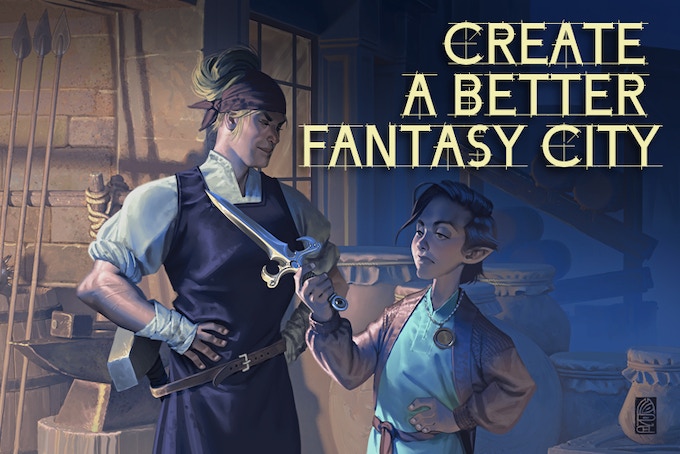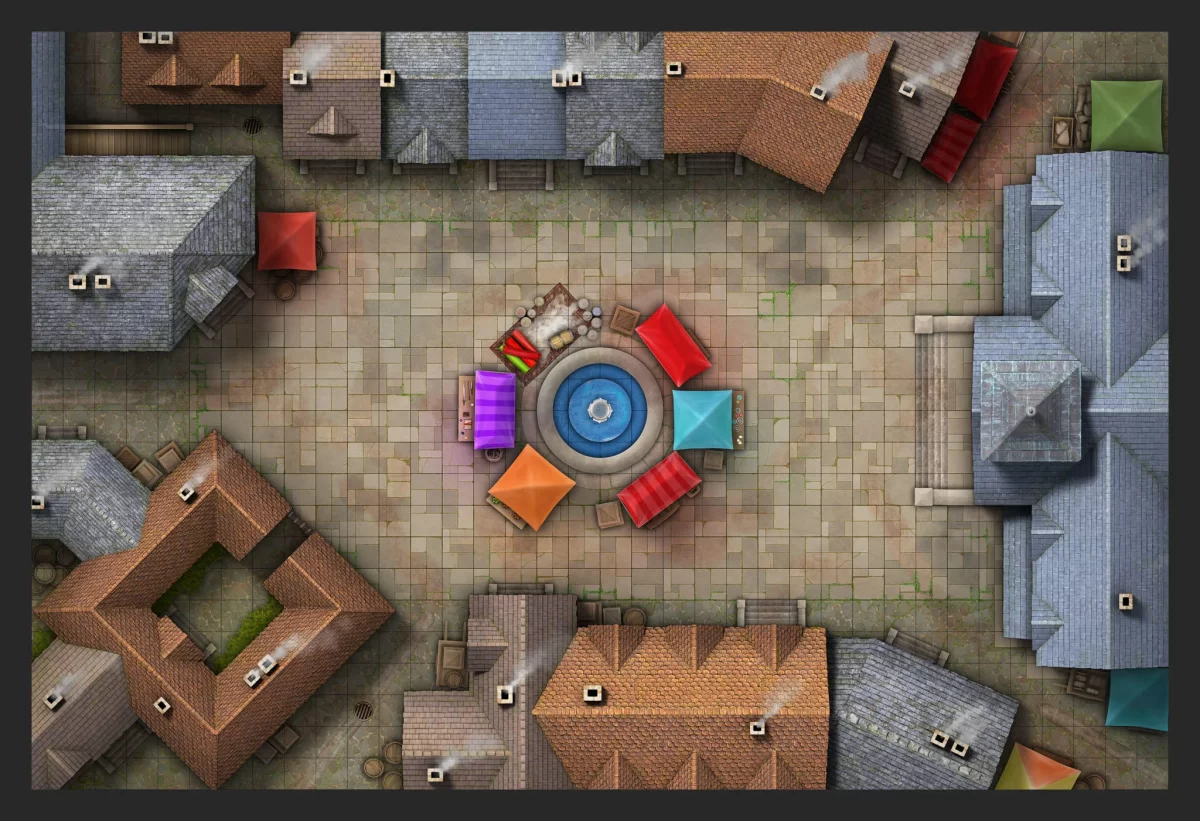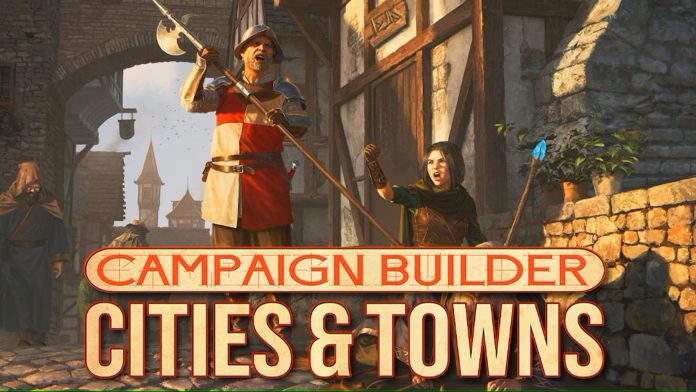When planning a campaign, it can be tough to create environments for your players’ characters to occupy. It can become especially troublesome as the number of towns and cities that could populate your world become denser and more intricate. How do you know what questions to keep track of when constructing your settlements? Is there a proportion of houses to taverns you need to be aware of? Why do they exist in the first place?
As a writer, making these choices is essential, as you raise the expectations of your audience; be they the reader of prose or a band of adventurers coming out of the tavern and feeling just fine. Questions also have to be considered as to how well documented the environments should be, and whether trade routes have been firmly established and need to be placed on a ‘consistent’ map.
Smaller maps allow for focus on particular places as different locations are created, giving each town and city visited distinct identity from its neighbours – but care needs to be taken in ensuring that there is balance and a smidge of logic as to how all the pieces of that puzzle fit together.
Keeping all this in mind, Kobold Press’ kickstarted Campaign Builder: Cities & Towns is a guide for people who think everything above to be the most daunting thing ever, which, to be fair, is totally understandable.

As someone who has tried to tackle the question before, I know just how even a glance at a map can raise certain assumptions and questions before exploration has even begun. Mostly, a map reveals where places exists and where they are relative to others, but also how large the scope of exploration is expected to be – a town map invites a tighter focus and in-depth dive into a location with plots driven by organizational and interpersonal conflicts, whereas a world map invites awe and a desire to explore every nook and cranny and possibly an inclination that their quest is directly tied to geopolitical conflicts.
The first chapter from Kobold Press’ introduction to city building brings your attention to the interpersonal environment of your city by posing some questions which help build the bare bones of the city you want to build;
- What is the city’s age?
- What is the city’s primary function?
- What are the city’s trade goods?
- What is the city’s size and population?
- What is the city’s government structure?
- BONUS QUESTION: What is the frequency of and general stance on magic?
It is fascinating to consider these and links to the larger question of what do people eat? How do the inhabitants of this town sustain themselves? What do they farm and/or forage? Do they import goods, and if so how do they afford the costs? Or are they exporters, in which case where does it go and how far? It seems like the kind of questions that would not normally be considered, as they have no plot-relevance, but it is one which supports how believable you can make the world feel.
These considerations raised by Kobold Press are important. Not only are these questions that players might raise, but also it allows the city to be manageable for Dungeon Masters. How long has the city been around for? If it’s relatively new, it’s presumably rather – and also has some teething problems with law enforcement and managing with local wildlife.
Bringing magic into the equation is an optional question, which depends on the relevance to plot or setting that is constructed – is it wild and free, educated and monitored, or frowned on and hunted down? Each answer sets a tone for the city and its inhabitants and helps develop a feeling within of just how unique each place is to visit and the possibilities it holds.
That being said some of the work here could be taken with a pinch of salt. Ironically, it’s the section on economy and trade goods. Whilst it might seem like a small nitpick, parties may decide to acquire goods for themselves. Dungeon Masters should probably adjust some of the prices according to their own logic, such as grain and flour – despite flour is made using grain, the processed product costs exactly the same (1 copper) as the original foodstuff.
Logically, there should be a least an increment of one more copper due to the labour costs to process the food. There are other minor issues which crop up, such as unspecified units of measurement, and some missing prices for some of the trade goods mentioned in city production tables.

A lot of questions are asked and it’s only the first chapter. There’s more to building a city than just those questions, and Kobold Press divides the book into five chapters to provide Dungeon Masters with ample opportunities to expand and develop the intricacies of the internal operations of their cities and aspects tjay players can become involved in
- Chapter 1 sets the parameters for your city: its age, primary function, trade goods, size and population, and government structure, plus the level and prevalence of magic.
- Chapter 2 details geography and climate, architecture, and city districting.
- Chapter 3 talks about the people: rulers, the guilds and organizations, henchmen and hirelings, and monstrous citizens. This chapter also includes statistics for urban NPCs and monsters.
- Chapter 4 shows you how to run urban adventures and campaigns: how to stage encounters, the roles of citizens, crime and punishment, city wealth and taxation, how to direct player characters and keep track of nonplayer characters, and more.
- Chapter 5 brings you player options, like character backgrounds, subclasses, spells, and magic items, as well as new rules for incorporating a contact network and running a business.
- The book even includes an Appendix within which are numerous tables and diagrams to support the visualisation and random generation of cities!

I found Kobold Press’ work to be succinct and informative, breaking up the questions with gorgeous artwork, examining aspects of the city to help develop its inner workings and machinations. There is even an interesting guild guide, laying out the responsibilities of NPCs, or even players, as well as the benefits such a position would offer.
The fifth chapter offers more involved player backgrounds and subclasses to enable players to feel invested in these cities, such as a street magician for roleplay opportunities, a monk built around parkour for making there way through the city and a circle of sewer druid – just imagine the possibilities there…
This is a fantastic toolkit for all who want to improve their worldbuilding arsenal, and one we recommend to writers and dungeon masters everywhere.



